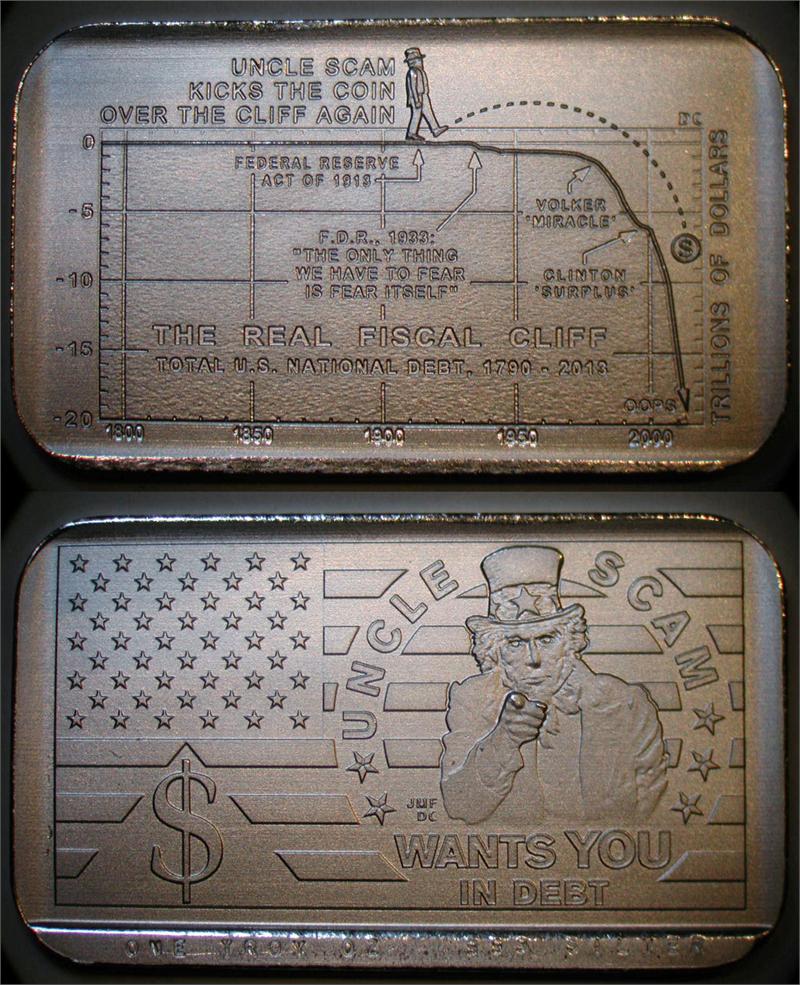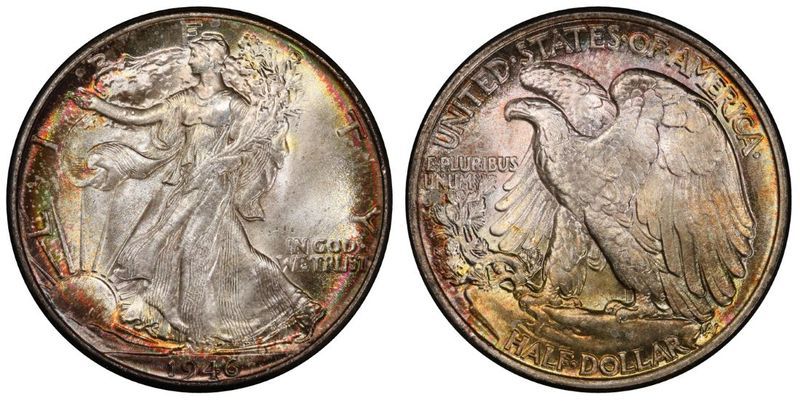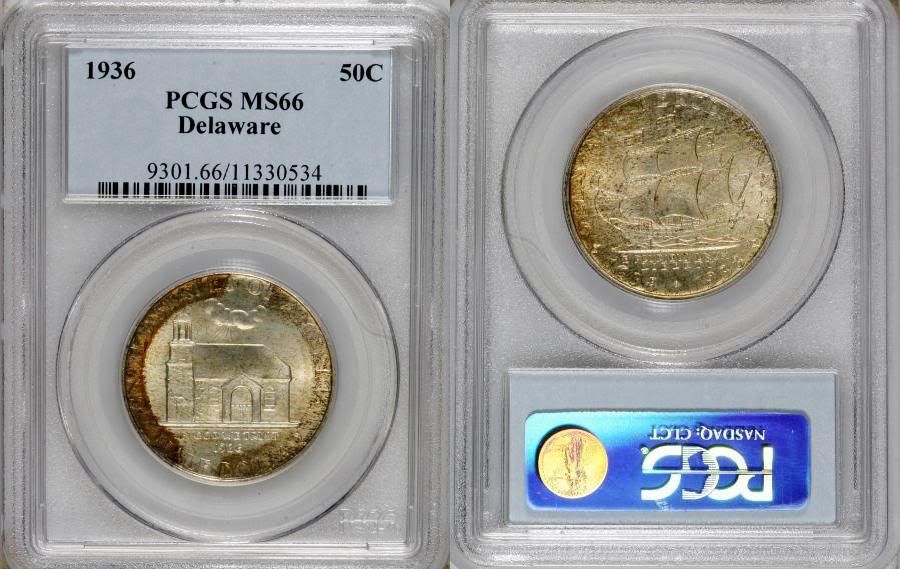-
When you click on links to various merchants on this site and make a purchase, this can result in this site earning a commission. Affiliate programs and affiliations include, but are not limited to, the eBay Partner Network.
-
Posts
2,593 -
Joined
-
Last visited
Content Type
Profiles
Forums
NGC Journals
Gallery
Events
Store
Downloads
Posts posted by Zoins
-
-
I'm currently looking at a token which is listed as "AR/BRONZE" on the insert by NGC, and was wondering what this referred to. Does it mean some kind of silvering or silver-plating on bronze?
NGC also lists some other items as "SILVERED-BRONZE".
-
Great info Roger! So it looks like Anna Williams is a contender!
There's still so much we don't know about these US Mint medals that it's pretty amazing.
Thanks for posting it.
-
To do this, we need the support of Congress. Back in 2013, Andy Barr (US House Rep - Kentucky) proposed a bill H.R. 2335 to put Lady Liberty back on circulating coins.
The interesting thing is that with as much desire as there seems to be for this, whenever I bring this up, not a single person mentions this bill, support of it, or writing to their Congressmen and Congresswomen. If not action is taken, no desired result should be expected

Here's the bill: https://www.congress.gov/bill/113th-congress/house-bill/2535/text
I wonder when I'll run into someone who has told their representatives to support this bill!
-
Sorry to hear that Larry but I understand and I'm with you on that. The forums have changed a lot recently due to the trolls to the point it's really no longer recognizable to me. If nothing can be done about the troll directly, the ignore feature really needs to be enhanced as mentioned by comicdonna. Hopefully the mods are aware of this as you mention and can set things back on course.
-
Sticking to coins and exonumia always works for me.

-
Bought raw, just graded pcgs 65

I love that !!

I 2nd that!
jom
Congrats! Great eye and pickup!
-
Been eyeing this up for a while, finally pulled the proverbial trigger:
This is the sellers images, will be sending out for Todd to redo some shortly.
Peace dollars with beautiful toning like that don't come up for sale too often.
Great purchase.
I agree. Congrats!
-
It's neat that the recipients of the medal are on them, e.g. "School Committee, Springfield Mass" in the OP's silver photos and "J.B. Smith & Sons" for Ankur's.
It would be neat to compile a known list of these with named recipients.
-
I'm sure Wells Fargo didn't object either. It's great marketing for them as well.The hoard name is nothing more than clever marketing. Collectors make a strong association between gold and the “old west.” The “Wells Fargo” name is one of the few from western American history that remain widely known. The connection is nostalgic, romantic and entirely artificial. If it were called the “Lichtenstein Hoard” would it have had as much appeal? Could the marketers have dumped nearly 20,000 over graded, common-date double eagles at premium prices from the “Lichtenstein Hoard?” -
The AnMo DinoLite Digital Microscope seems to be the new must have item, especially for VAMs, varieties, die cracks, errors, etc.
-
I can provide a quick answer. It's a US pattern so it was never issued by the US government. Patterns are design studies to test out designs before issue. This particular one is Barber's last variation of this type as he attempted designs for the then new dollar. It is cataloged as J-1554 in Hewitt Judd's book on patterns. More information is available on USPatterns.com.Boiler, what is that? I thought I was familiar with most US issues but I don't know what that dollar is.Although patterns are not coins in that they were never monetized and issued as legal tender, many people consider them very beautiful and collectible in their own right. There are many types and varieties.
-
That Middlesex Forster's 302 is pretty sweet. I like the musical notes

-
That's another sweet medal! The Ben Weiss Collection website has a number (all?) of Wiener's Belgium and European architectural medals. The ten Belgium medals also come as a set in an original box (larger image available here):Just got back from vacation to find one of Jacques Wiener's architectural medals. This man did nice work! -
Nice photos Rey. Thanks for sharing your technique


-
That's very cool. I like the chariot as well. Do you know what the words say and/or who designed it?My ONLY '55 is from Egypt. The 5 Pound Chariot. I am smitten with the design.
This pic is better than the attachment.
-
That is a beautiful token yarm
Yarm - That is the Town Hall in Brussels. I recognised it immediately. It's located on the Grand Plaza (Gran Plas) in the heart of Brussels. The Gran Plas is a great place to have an outstanding Belgium beer and watch people!............................Rey, according to the seller, the gilt medal depicts "Town Hall" in Brussels! (really?) What attracted me to it was the steeple and clouds similar to this Conder token of St. Michael's church, London.Outstanding token BTW!

 Nice info farthing!
Nice info farthing! 
Recently I've taken a liking to including some descriptive text with the image when it might be useful. I was thinking it might be useful to include the town hall text with image for this token. Here's an example with period flags of China in the corners.

-
Some RCM OGP are known for producing a certain kind of desirable toning and those boxes have been used to tone other coins in addition to the ones that came with the box originally. "Cased" may be used to indicate the type of toning.
-
Hi yarm, I saw a large and small one posted ATS in the US Coin Forum but can't find the thread now. I believe the images were posted by coindeuce and that the smaller one also had a depiction of the building.
-
Love that Crystal Palace medal yarm! Especially the obverse.
From the detail on the left over her head, this would seem to match the smaller medals rather than the larger one. What is the diameter of this?
Congrats on a beautiful piece!
-
Great images James. Loved the background on this one. Definitely wasn't expecting that


-
Coins that were graded by PCGS have been cracked, resubmitted to PCGS and come back in bodybags. So it's not just NTC. NTC coins will give you a higher probability of getting a bodybag at a top TPG, but there is some inherent variability in the grading process, regardless of previous TPG.
You can post photos here to get opinions on the coin. If people here generally say they are problem-free, it might make sense to resubmit the coins.
As for cracking out, more risk is often correlated with more reward. You need to decide how much risk you are comfortable with.
-
If you send the coin in the slab, some TPGs will use the previous grade as one of the consensus grades so it will have an impact on the new grade. Cracking out the coin will improve your chances of upgrading at TPGs that do this. I believe PCGS does this. Not sure about NGC.
-
Lou, very cool looking sheild nickel, a lot of character on that one!
dooly, nice piece! Love the wreath around Washington's head. Makes him look like Caesar Washington!
-
Lee, the angle of that tab toning with the lack of color coming in at an angle directly through the clouds is killer. Sweet coin!I like that Delaware, Lee!
Thanks Tom.
 Can't wait to see it "In-Hand"!
Can't wait to see it "In-Hand"!




What does "AR/BRONZE" refer to on a certification?
in US, World, and Ancient Coins
Posted · Edited by Zoins
Does this mean AR/BRONZE an alloy of Silver and Bronze with Silver being 25% pure to high purity?